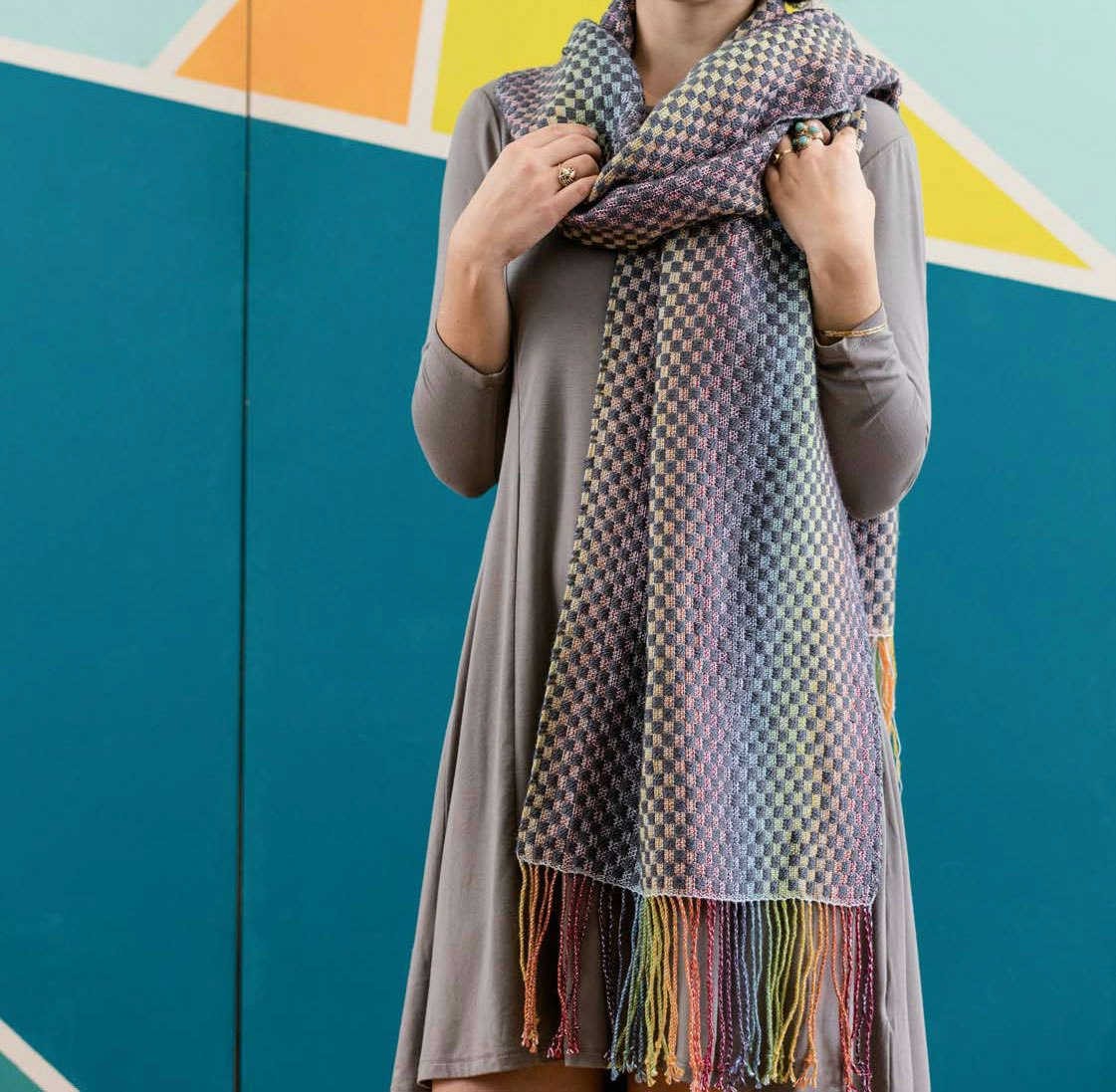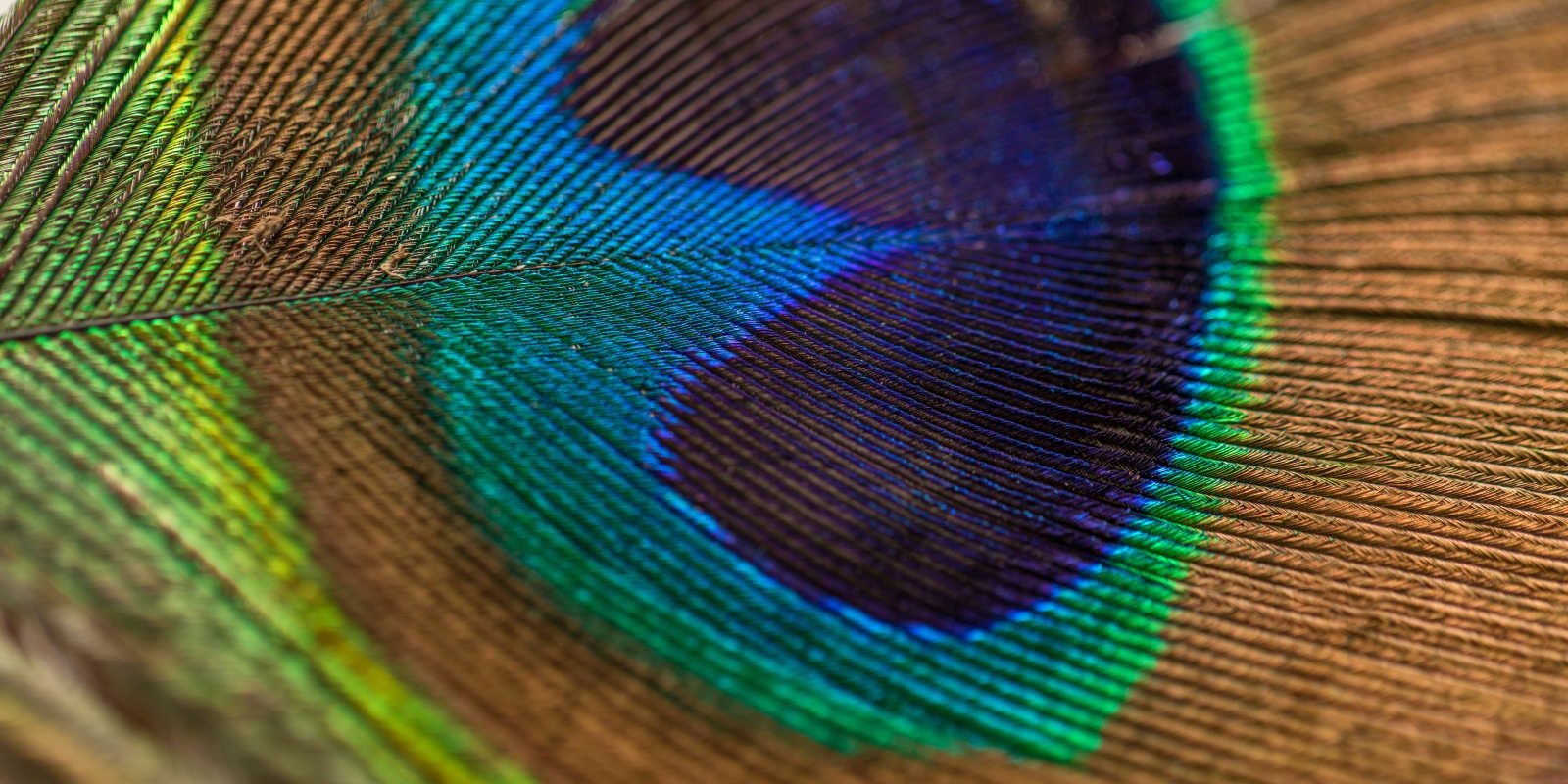Iridescence seems particularly magical in fine fabric because our eyes don’t perceive the thread intersections and the effect is a solid sheen of color reflecting at a particular angle. However, not all weavers want to weave with thin threads, so it’s nice to know that you can achieve striking iridescence even with thicker yarns. When heavier threads cross, the different-colored thread intersections remain visible. You can see all the colors at any particular angle, but one color will be more dominant, and this apparent dominant color will still shift when you view the fabric from different angles.
Rigid-heddle weavers have many options for weaving iridescence, even if using one heddle and plain weave. Iridescence requires some visual contrast, which usually comes from crossing distinct colors. A balanced weave gives warp and weft equal opportunity to show. Color shifts are most evident seen at low and high angles. If you’re using a rigid-heddle loom and want to achieve iridescence in your cloth, I have a few recommendations.
First, cross unrelated colors for the most dramatic effect. You don’t have to use complementary colors (opposites on a color wheel). Those tend to create browned or grayed effects at certain distances and are not always the most attractive combinations. For iridescence that’s a little more subtle, choose colors that are easy to tell apart yet closely related on the color wheel (analogous or neighboring colors). Turquoise crossed with yellow-green is a combination I find especially pleasing.
Second, experiment with your weft size. If the weft color overwhelms a warp color of the same size, try a finer weft to subdue it a bit.
Lustrous yarns reflect light best and enhance iridescence. Pearl cotton in 3/2 or 5/2 sizes can be effective at setts of 12 or 15 ends per inch. Other enticing choices are 5/2 rayon (including bamboo) and heavy silk. Finer yarns (including Tencel, a type of rayon) can be doubled in the warp and weft. Metallic yarns are available in a variety of sizes and colors, as are yarns that reflect a whole spectrum of colors. Use these yarns judiciously so as to not overwhelm another yarn in your project. A sparkle of color from a fine metallic yarn mixed with a heavier weft may be a better choice than a metallic weft the same size as your warp.

Sara Bixler's Rainbow Connection Shawl from the 2017 Easy Weaving With Little Looms is an example of iridescence creating on a rigid-heddle loom. Photo Credit: George Boe
Space-dyed yarns can produce iridescence when crossed, as long as warp and weft are in distinct color families and do not contain the same colors. Some of the self-patterning sock yarns, which have short color sections, are also fun to experiment with.
You can weave three-color iridescence using two distinct weft colors that are different from, yet compatible with, a solid-colored warp. Using two shuttles, weave the two wefts in the same shed, traveling in the same direction. Keep them parallel and don’t allow them to cross. Beat them together in a closed shed, or beat each weft separately before reopening the same shed. Maintain the same weft-color sequence throughout. You can even weave with three weft colors in the same manner, using three shuttles to create four-color iridescence. All the colors are present at each thread intersection. With thick or coarse yarns, the ability to see all the colors at once can make these fabrics look complex and quite stunning. If you use pick-up sticks and/or more than one rigid heddle for different weave structures, the possibilities can be even more amazing!
For more on iridescence in weaving, check out Bobbie’s book Weaving Iridescence, from Stackpole Books. Weaving Iridescence is available in bookstores and online.
Originally published 6/30/2022; updated 1/21/2025

